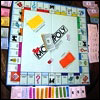Up to this point, we have analyzed the operation of firms in a perfectly competitive market. However, there are many markets that are not competitive: either there is only one firm operating (a monopoly), or a small number of firms are present (an oligopoly). Firm behavior in the context of a monopoly or an oligopoly can be very different. In this unit, you will learn how to model the decisions made by firm in a monopoly and an oligopoly, and the implications of these alternate structures for consumer welfare.

|
Image courtesy of William Boncher on Flickr. |
|
|
Image courtesy of John Taylor on Flickr. |
|
|
Image courtesy of Sheep purple on Flickr. |
|
|
Image courtesy of ElCapitan on Flickr. |













